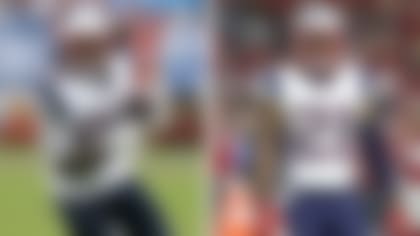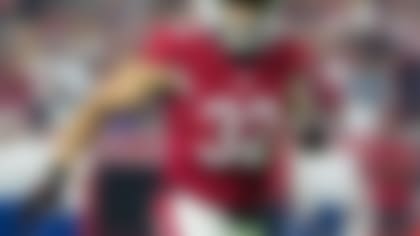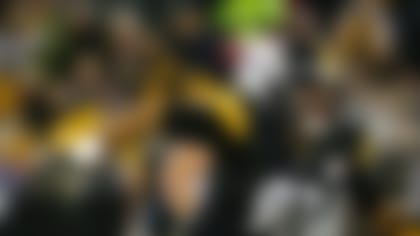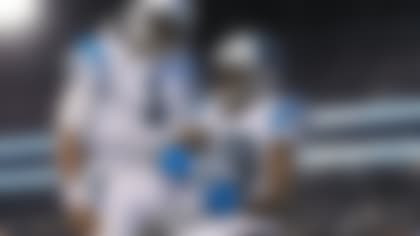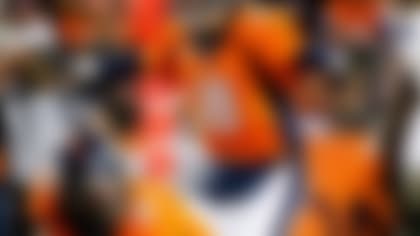What's wrong with the San Francisco 49ers' defense?
That's the question likely running rampant through the minds of offensive coordinators around the NFL after seeing the Niners surrender 30-plus points in back-to-back games against the New England Patriots and Seattle Seahawks.
While opponents have discovered a few tactical advantages with which they could exploit the 49ers' defensive scheme, a potential season-ending injury to defensive tackle Justin Smith was what really made the once-impenetrable unit look very vulnerable in recent weeks. The 12th-year pro is sidelined with a partially torn left triceps muscle, and his availability for the postseason is still undetermined.
With the loss of Smith suddenly crippling San Francisco's defense, I decided to dig into the All-22 Coaches Film to see how opponents are attacking the unit. I discovered the following three keys to having offensive success against the Niners:
1) Run the ball at Aldon Smith.
For all of the accolades and attention directed at Aldon Smith for his spectacular play this season, he remains a work in progress as a run defender. The second-year pro is a rangy athlete with exceptional speed, quickness and length, but he is not a stout player at the point of attack. He fails to set the edge properly against reach and combination blocks, allowing runners to bounce to the outside or make quick cuts to the inside. In addition, Smith has been slow to shed and disengage with blockers at the line of scrimmage, giving runners the opportunity to quickly reach the second level for positive gains.
On the interior, the loss of Justin Smith forces the Niners to rely on Ricky Jean Francois and Ian Williams on the defensive front. While both are somewhat capable of playing as the three-technique (outside shade of the guard) or five-technique (outside shade of the offensive tackle), each is regarded as a natural nose tackle and lacks Justin Smith's combination of strength and athleticism. These deficiencies are apparent when studying the All-22 footage of the 49ers' last five quarters without Smith on the field.
In the following screengrab, taken from San Francisco's blowout loss to the Seattle Seahawks, the 49ers are in their normal 3-4 alignment, with Aldon Smith lined up at the top of the screen. The Seahawks are in an ace-tight wing formation, with tight ends Anthony McCoy and Zach Miller closely stacked together on the left:
At the snap, McCoy and Miller initially double team Smith, before Miller heads downfield to pick up Niners safety Donte Whitner. On the inside, left tackle Russell Okung and left guard Paul McQuistan will execute a double-team block on Jean Francois to solidify the gap to the left:
Jean Francois fails to split the double team and falls to the inside, while Smith can't get off McCoy's block. This allows Marshawn Lynch to explode through the hole for a 24-yard touchdown:
The 49ers' gap control scheme is predicated on every defender owning his assigned gap; each guy must play the proper assignment with the correct technique. Without Justin Smith on the field, execution mistakes have led to big gains against San Francisco's defense.
In the video to the right, Seahawks running back Robert Turbin breaks off a 24-yard gain when Smith fails to get off his block quickly at the point of attack and Williams takes a poor angle to the ball.
Without proper execution from all 11 defenders, San Francisco's defense is vulnerable against the run, and it certainly is not the impenetrable force that reigned over the NFL for most of the season.
2) Slide pass protection to Aldon Smith.
The 49ers' pass rush had become one of the NFL's most feared units with the pairing of Justin and Aldon Smith on the same side of the line. The duo has combined for 44 sacks over the past two seasons, with Aldon Smith accounting for 33.5 despite starting his career as a situational pass rusher.
Part of Aldon Smith's success can be attributed to Justin Smith's remarkable ability to pick offensive guards and tackles on stunts and games. Justin Smith has tremendous hand strength; he excels at grabbing and holding blockers to create lanes for Aldon Smith on the inside loop. The 49ers capitalize on both of their skill sets by frequently calling various stunts and games in obvious passing downs.
In the next screengrab, taken from San Francisco's Week 12 win over the New Orleans Saints, the Niners dial up an inside loop for Aldon Smith as Drew Brees and Co. try to mount a comeback in the fourth quarter:
With Justin Smith occupying a pair of Saints linemen, Aldon Smith slips inside to an open alley:
Brees tries to reset and look downfield after a play-action fake, but both Smiths engulf him for an 8-yard loss:
Given this duo's success regarding stunts and games, the 49ers had been able to generate pressure on the passer without having to frequently blitz five or more rushers, ensuring maximum coverage against the pass and limiting big plays through the air.
Of course, with Justin Smith out of the lineup, the 49ers in general and Aldon Smith in particular have found it more difficult to get the passer. He has failed to register a single sack over the past five quarters, as opponents have been able to keep him contained off the edge.
As I studied the All-22 film, I noticed that offenses are sliding protection to Aldon Smith's side and using an extra blocker to keep him from attacking the quarterback off the edge. The offense will direct the running back to the weak side while sliding the offensive line to Smith's side to ensure he must defeat an offensive lineman to get to the quarterback. With teams having success putting "big on big" against Smith, San Francisco must develop a counter tactic to generate consistent pressure on the quarterback.
3) Run pick and rub routes to defeat man coverage.
San Francisco had become a dominant defense by utilizing a simplistic scheme that features a four-man rush and a variety of man coverages behind it. The 49ers used an assortment of man-free (man-to-man coverage with a free safety in the middle of the field) and two-man (two deep safeties with man-to-man coverage from underneath defenders) tactics. The tight man coverage forced quarterbacks to fit balls into tight windows, while challenging receivers to win against physical play on the outside. When the Niners were able to generate pressure solely with their front four, this combination of coverage and rush made it tough for opponents to string together successful plays and sustain drives.
However, the loss of Smith has allowed opponents to neutralize the pass rush and attack the 49ers' secondary with a host of rub and pick routes designed to free receivers all over the field. After Justin Smith's departure, both the New England Patriots and Seahawks effectively utilized these concepts to defeat San Francisco's man coverage. The Seahawks in particular used the concept to score points in the red zone.
In the following screengrab, the Seahawks motion McCoy into a stacked alignment with receiver Sidney Rice:
Seattle then runs a corner/quick out combination to create an easy throw for Russell Wilson:
The 49ers are in man-to-man coverage with a possible switch-call alert (defenders exchange receivers on crossing routes to avoid picks). With the stack alignment and double out-breaking routes, McCoy is left alone in the flat for a 6-yard score:
This wasn't the only pick concept Seattle used to score a touchdown.
In the video to the right, the Seahawks are aligned in a trips formation with three receivers to the right. Doug Baldwin is aligned in the slot, with Golden Tate on the outside. The 49ers are in man coverage, using a "cut" concept to guard against potential rub routes. However, the Seahawks exploit the tactic by having Tate run a snag to attract the attention of Dashon Goldson and Tarell Brown. This leaves Carlos Rogers out of position to defend Baldwin's post-corner, resulting in another Seattle score.
With the pass rush severely weakened by Justin Smith's injury, San Francisco has been unable to disrupt the timing of the opponent's passing game, leading to more big plays against the unit. If the 49ers fail to generate a consistent pass rush in the coming weeks, the secondary will remain vulnerable to the pick and rub routes that have helped opponents light up the scoreboard in recent weeks.
Follow Bucky Brooks on Twitter @BuckyBrooks.


